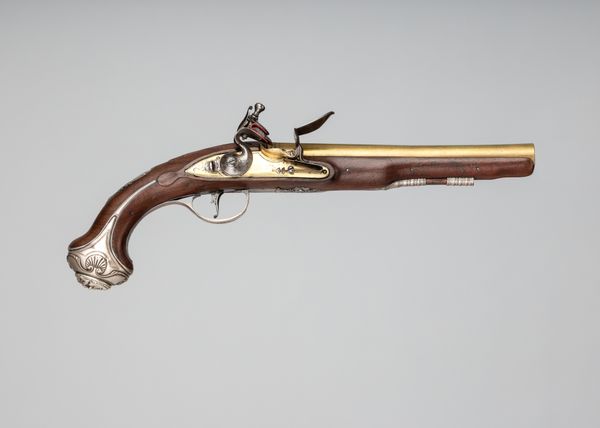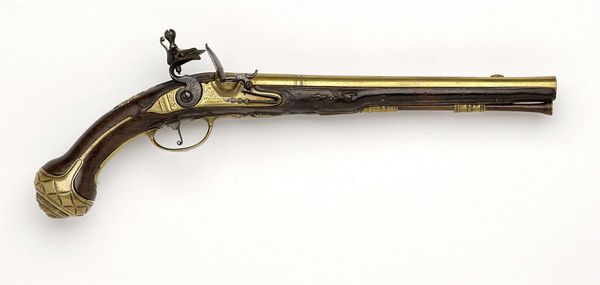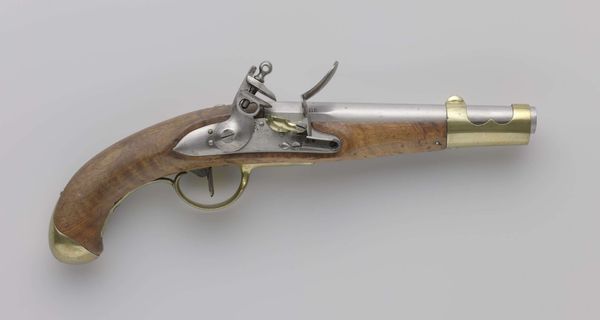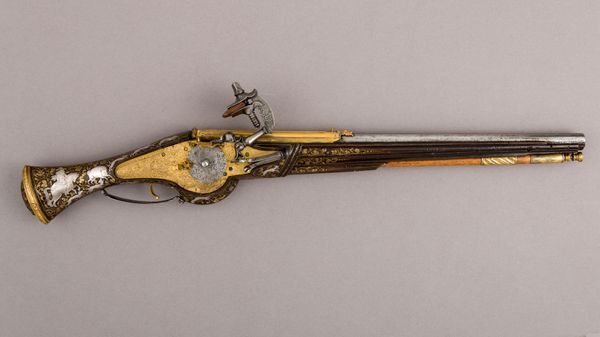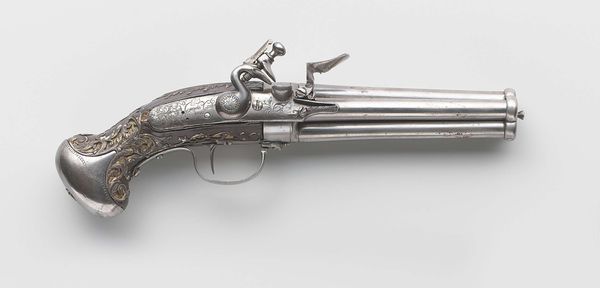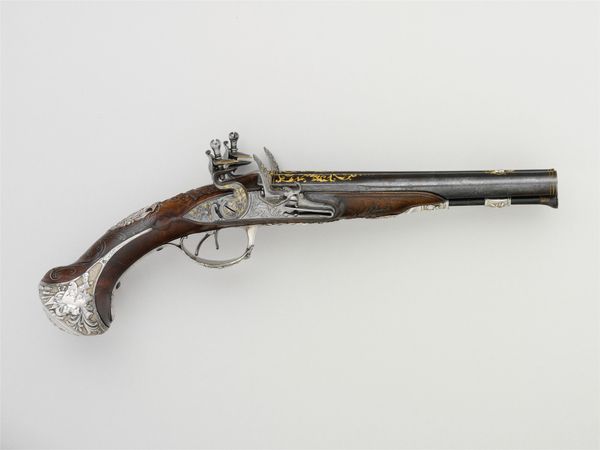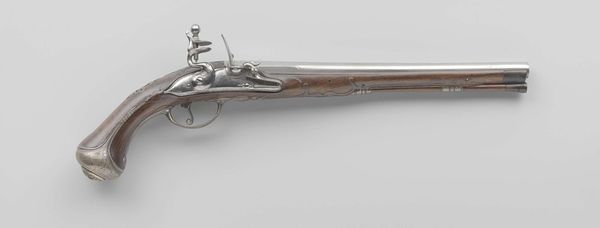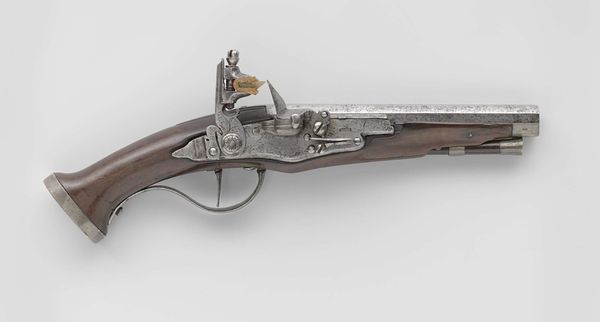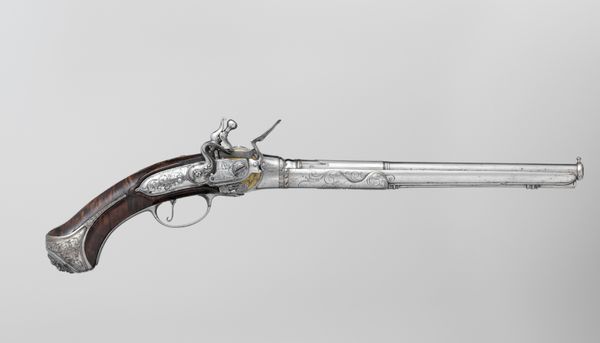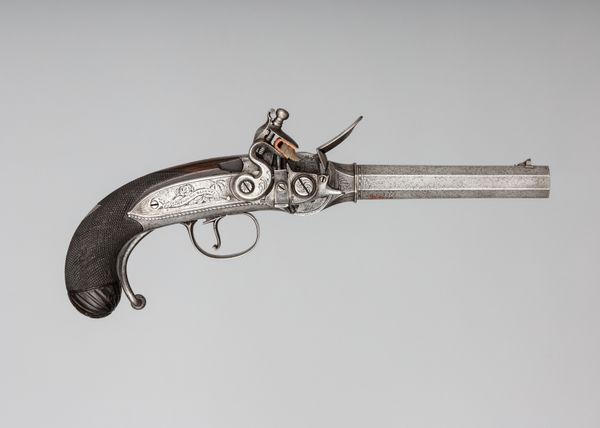
Pair of Wheellock Pistols Made for the Bodyguard of the Prince-Elector of Saxony 1565 - 1615
0:00
0:00
brass, metal, sculpture, wood
#
portrait
#
brass
#
medieval
#
germany
#
metal
#
sculpture
#
sculpture
#
wood
#
history-painting
#
armor
#
decorative-art
Dimensions: 14.25.1399a; L. 24 3/16 in. (61.4 cm); L. of barrel 15 1/16 in. (38.3 cm); Cal. .502 in. (12.8 mm); Wt. 4 lb. 3 oz. (1899 g) 14.25.1399b; L. 24 3/4 in. (62.9 cm); L. of barrel 15 3/8 in. (39.1 cm); Cal. .507 in. (12.88 mm); Wt. 4 lb. 1 oz. (1850 g)
Copyright: Public Domain
Curator: These are a pair of wheellock pistols, believed to have been made between 1565 and 1615 for the bodyguard of the Prince-Elector of Saxony. They are currently held here at the Metropolitan Museum of Art. The maker has been identified as Zacharias Herold. Editor: My initial thought is that they’re exquisitely ornamented. The contrast between the dark wood and the polished metal, with those flourishes, is quite striking. Functional violence, but presented as fine art. Curator: Indeed. Wheellock pistols represented a significant technological advancement at the time. The mechanism, using a rotating wheel to create a spark, was complex and expensive, hence their association with wealth and power. To own a matched pair suggests considerable status, placing these weapons squarely in the socio-political theater of the late Renaissance. Editor: The craftsmanship is superb. Note the detailed carving on the stock. There are mythical figures, are they not? It really underscores your point about status and power. And then you see the intricate gold inlay on the barrel. How much does ornamentation deflect or mitigate the deadly purpose of such arms? Curator: Good question. For the Prince-Elector’s guard, bearing such arms communicated not just force, but refined authority. These pistols were statements, not only of individual protection but also embodiments of the Elector’s dominion. These objects merge protection, technological sophistication, and courtly visual expression in such an incredible way. Editor: So, you're suggesting the value wasn't primarily the power they offered the individual, but as symbolic displays of a much larger power structure? Like shiny badges. I find that slightly disturbing. It would be as though today we turned every weapon into decorative sculpture. Curator: Precisely, or more accurately perhaps as carefully crafted propaganda. What intrigues me, and perhaps troubles you, is how violence has historically been rendered aesthetic. Editor: It’s compelling to see how meticulously such power was rendered, and as always it seems that those with the most invested in power are not the direct wielders but are in fact the protected and celebrated. A potent reflection of how political power plays out, really. Thank you.
Comments
No comments
Be the first to comment and join the conversation on the ultimate creative platform.
